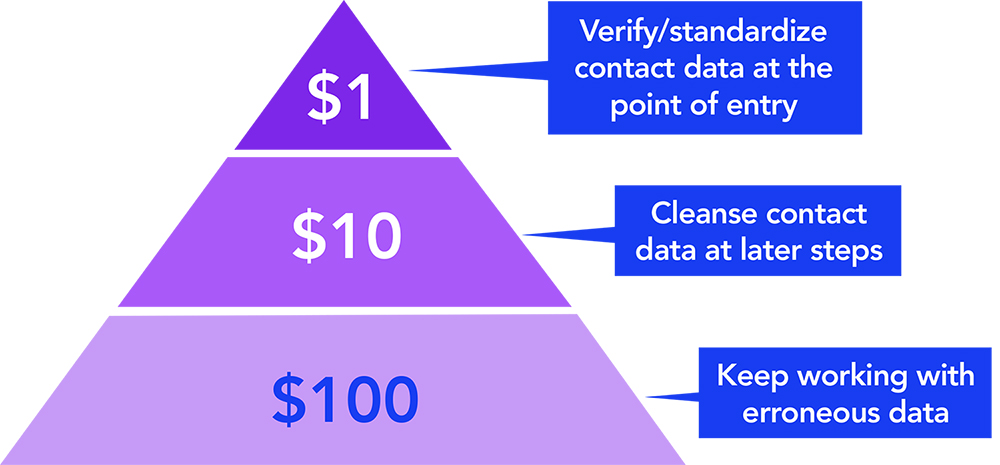Work Is Where the Home Is
As more and more people work from home – both temporarily and with the potential for permanent workplace change – it is tougher than ever for direct marketers to reach prospects at the right place. B2B campaigns today must address the question of how to connect with B2B leads and customers in more of a B2C setting, using residential mailing as a channel for the first time.
Consider that those working from home have limited or zero access to their business mailboxes, a shift potentially driven by a range of factors such as reduced convenience, revised priorities, and even company or workplace policies. Mail may be collected much less frequently or perhaps not at all, and mail center procedures likely avoid forwarding mail to remote workers. Marketers may know a piece was delivered, but they have no such confidence the piece was seen.
Where time-sensitive materials could once be followed up with a workplace phone call, in this case no one may be “home.” Or rather, that is exactly where they are – this paradigm shift is making it imperative to enhance customer records with residential data that was never before considered necessary or even appropriate to reach a B2B campaign target.

Consider the 1-10-100 rule when valuing data quality operations and technologies. With the right tools in place, it costs an average of $1 per record to verify data at the point-of-entry. Costs jump to about $10 per record when cleansing occurs intermittently once data is held within your ERP or CRM systems, for example to correct, update, and deduplicate records via batch processes. When no data quality operations are in place, costs leap to a whopping $100 per record, including the cost of lost opportunities, ranging from wasted time and materials, unfruitful marketing efforts, poor reputation, and ultimately, lost customers.
Mail Means More Now
Why is mail more relevant and worthwhile to direct marketers today? There is less competition in the mailbox than ever before, and today’s B2B target benefits from the same direct marketing values as consumers. The audience is not only captive but also seeking stability and connection in a deeply disrupted personal and professional environment. And daily mail links the individual to the outside world – its physical nature is reassuring. A remote worker’s day may not necessarily be oriented around receiving the mail, but its arrival is a consistent moment of connection in an anxious world, getting attention as a familiar and often welcome outreach.
These deviations from standard practice are likely not going away anytime soon. More and more businesses have recognized the pandemic as a sort of litmus test for companywide remote working, as well as a departure from costly urban settings. This has opened a new window for marketers, but also a new challenge to locate the right people at the right location.
Getting Smarter with Identity Matching
Full contact intelligence is the ideal approach, offering linkage of personal and professional data for a single contact. For example, marrying a robust consumer database with a spectrum of third-party datasets allows marketers to locate John Smith at XYZ Company and connect the dots to reach him at home. With identity cross-matching, marketers can locate a residence, along with associated emails and phones for the named contact.
Identity matching technology draws on an individual’s known details to complete missing elements, enabling organizations to build more thorough customer records. In this scenario, missing gaps in contact records are used to flesh out a single view of the customer. All it takes is one piece of data, such as an email address, phone number, or address to find and verify more information about an individual. Powerful but readily available tools offer this unique ability to determine whether associations between different elements, such as name and address, are on target. This increases accuracy by ensuring a valid and correct link between the data and identity of individual customer contacts. With the capability to compare incoming customer and prospect data against multi-sourced datasets – including telecom data, USPS datasets, title and deed information, financials, GIS, and more – marketers can verify an identity, amend addresses, and append missing contact information. The result is a greater level of intelligence that accommodates the new blurring of B2B and B2C marketing strategies and channels.
Global data is critical to the identity matching process, and fortunately today’s marketers have access to huge amounts of data from customers via an expanding number of touchpoints. Ideally, records must be sourced from a full spectrum of global datasets containing billions of active and historical records; these are then combined with millions more datapoints that may be referenced only in proprietary data stores. This is great news for marketers aiming to deliver standout personalized customer communications.
It is, however, important to note that this high level of attention to data quality and management must be maintained as an ongoing priority. Without regular intervention, customer data degrades at two percent each month or as much as 25% annually – this has the potential to waste a quarter of the year’s marketing budget each and every year.
Creating A Direct Mail Moment
Good data is clearly worth the effort, particularly for direct mail, known for converting better than any other type of marketing in an omnichannel strategy. With the addition of tools such as tracking or Informed Delivery, marketers know where their mail is and when it is expected for delivery – excellent guidance in embarking on the rest of an overall campaign.
With people craving security and community, receiving mail has evolved into a welcome experience. And with the better data connections empowered by full contact intelligence, marketers can capitalize on this unique moment in the world – offering value to customers and prospects, and improving both their B2C and B2B programs and results.
Greg Brown is Vice President of Global Marketing, Melissa, provider of global data quality and address management solutions that span the entire data quality lifecycle and integrate into CRM, e-commerce, master data management, and Big Data platforms. Contact Greg at greg.brown@melissa.com or via LinkedIn.
This article originally appeared in the September/October, 2020 issue of Mailing Systems Technology.













